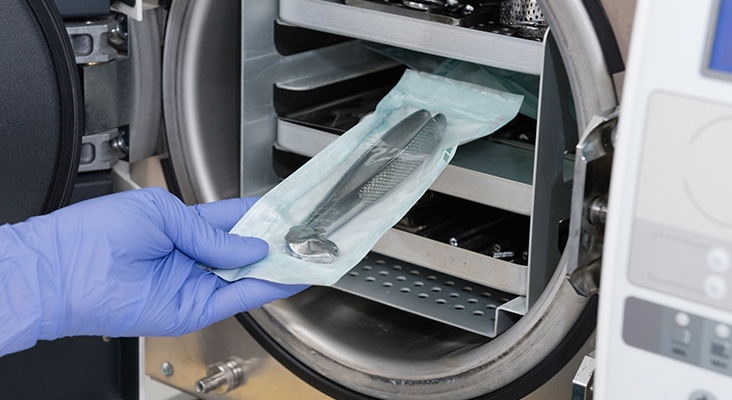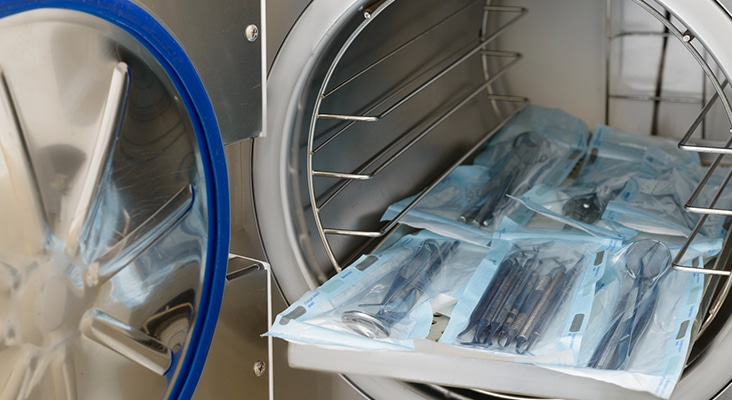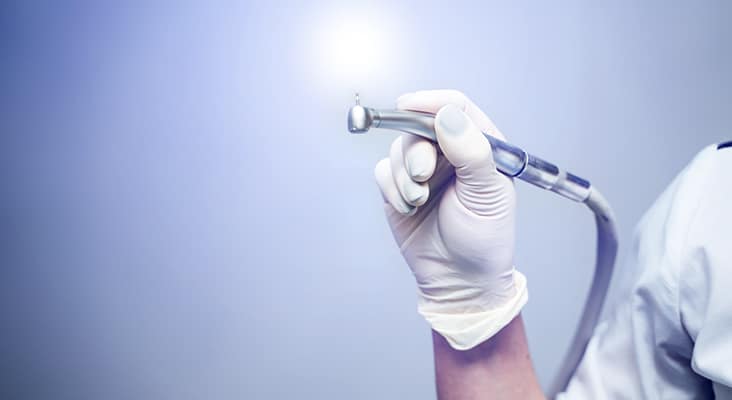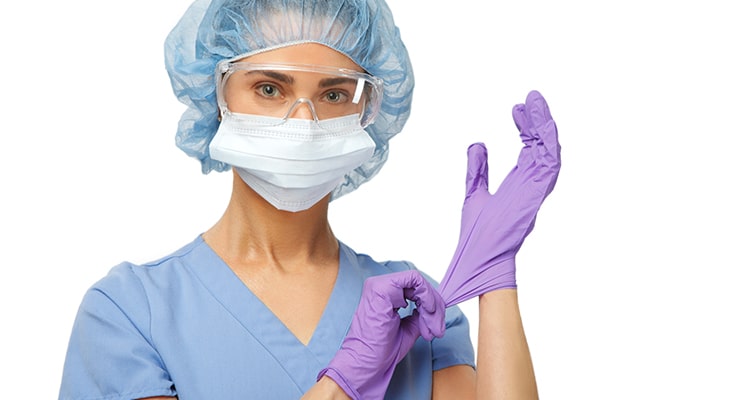Supporting Proper Infection Control in Volunteer Settings
Volunteering to provide oral health care to underserved populations allows clinicians to do the most good for the most patients and deliver services not otherwise available. It also provides a chance to perform a high volume of work without regard for whether the patient can pay.

Giving Back
Volunteering to provide oral health care to underserved populations allows clinicians to do the most good for the most patients and deliver services not otherwise available. It also provides a chance to perform a high volume of work without regard for whether the patient can pay. Sometimes, there is an opportunity to do procedures not normally done in the clinician’s private practice (extractions, for example) by working with a mentor. Practicing with seasoned colleagues allows the mission to be a learning experience, and return visits to similar locations will allow clinicians to follow up with local providers to see whether any patients experienced post-operative complications or infections. In order to guard against the chance of post-op infections, strict adherence to infection control principles must be maintained, along with an assurance that sterile instruments are used during treatment.
Photo Credit: Boonyachoat / iStock / Getty Images Plus

Instrument Processing
Common instrument processing steps include transport of contaminated instruments, cleaning, decontamination and maintenance, inspection (for cleanliness, corrosion and breakage), packaging, sterilization, sterilizer monitoring, and sterile storage. Each aspect should be considered in pre-trip planning. An initial decision as to whether to use instruments in kits or in loose groups held together in a sterilization pouch is a good starting point. This will begin to account for the workflow, personnel needed, and packaging requirements (eg, cassettes, wraps, or bags); it will also dictate what types of bins will be needed to safely transport instruments from the operative area to the sterilization area.
Photo Credit: microgen / iStock / Getty Images Plus

Tight on Space
Space is limited on most dental missions; therefore, planning to use only a small amount of space is highly beneficial. This is another area in which basic principles apply. One-way workflows and low personnel traffic are key planning concepts to consider. Instrument drop-off near the ultrasonic unit will reduce instrument handling and the time personnel will spend in heavy utility gloves in hot environments. A space between the ultrasonic cleaner and sterilizer will be useful for inspecting instruments for cleanliness, corrosion, and breakage, and for packaging instruments to go into the sterilizer. A sink located in this space will be useful for hand scrubbing instruments and rinsing instruments when necessary. Packaging helps instruments maintain sterility while stored in less-than-ideal conditions, such as high dust and humidity. Processing packaged instruments works best when using steam sterilization, dry heat, or ethylene oxide.
Photo Credit: fstop123 / E+

Sterilization
Sterilization is one of the most critical decisions affecting overall mission success. In the planning stages, consider how the sterilizer or sterilization method will perform in the chosen environment. Will the electrical power be adequate, or will an extra generator be needed for sterilization? Will the team have access to the necessary water (remembering that distilled water is not available in all countries)? Planning to use the simplest available means of sterilization is best. If only solid instruments are taken for treatment (eg, scalers, forceps, elevators, and retractors), dry-heat sterilization may be adequate—although most dry-heat sterilizers utilize long sterilization cycles (unless forced air circulation chamber technology is used). Regarding water quality, water purifiers/distillers may satisfy the requirements of some tabletop steam sterilizers. Whatever method is chosen, there must be a validated cycle that meets the instrument processing instructions.
Photo Credit: oneblink-cj / iStock / Getty Images Plus

A New Dimension of Infection Control
If the scope of the mission includes operative dentistry or endodontics, it introduces a new dimension of infection control—specifically, handpieces and dental units. Compared to solid metal instruments, handpieces present a more complex challenge in terms of sterilization and maintenance. Dental units pose their own list of requirements, such as waterline disinfection and maintenance, as well as suction decontamination and maintenance. The internal workings of a handpiece require a sterilization medium that penetrates the internal lumens and moving parts that generate the spin and torque of the bur. Because handpieces are heat tolerant, and liquid sterilants cannot be monitored like heat sterilization, it is not appropriate to sterilize handpieces using cold sterilization methods, such as glutaraldehyde. Steam and forced air dry heat are the most efficient ways to sterilize handpieces, and these methods can be accomplished in less than an hour per load in most cases. Many handpiece manufacturer instructions recommend specific methods for decontamination, cleaning, and sterilization. This is another opportunity to plan ahead. In order to render handpieces (including slow-speed motors) sterile prior to use, these instructions must be followed between every patient.
Photo Credit: Vadym Terelyuk / iStock / Getty Images Plus

Balancing Act
Mission teams must strike a balance between the number of patients treated (eg, 10 patients per hour: five operative and five extractions) and the volume of materials and equipment that can be staged or shipped to the location. In this example, if all 10 kits fit into one sterilization cycle that takes 45 minutes, in order to clean and package instruments and see the next hour’s patients, the processing cycle may take up to 90 minutes. Using this calculation, 15 operative and 15 extraction kits would be needed in order to continually see patients through an 8-hour day. In addition, there are advantages and disadvantages in expanding the scope of care if the intention is to move the practice location every day (or every several days). Moving too much equipment—either overnight or during one of the workdays—may limit the number of clinical days or severely stress the team. It is critical to plan for a reasonable amount of work each day, taking into account the fitness of the dental team.
Photo Credit: Vitalalp / iStock / Getty Images Plus

Personal Protective Equipment
Personal protective equipment for dental treatment and instrument processing should be used during mission dentistry, just as it is in traditional practice settings. Adequate supplies of scrubs or gowns, exam gloves, safety glasses (for patients and providers), masks, and hair covers should be considered in mission planning. All staff must be protected with the needed vaccinations for local endemic diseases and common outbreaks that may include hepatitis A, hepatitis B, typhoid, and cholera. Malaria prophylaxis and mosquito netting may also be required to keep the mission team safe. A contingency plan should be created for post-exposure prophylaxis for human immunodeficiency virus or hepatitis C in case of bloodborne pathogen-contaminated exposures or needlesticks. A competent medical authority to counsel and provide the needed medications within a few hours is the standard of care. This may be accomplished through some form of electronic messaging and telemedicine, but the inventory should include an adequate supply of the required medications.

